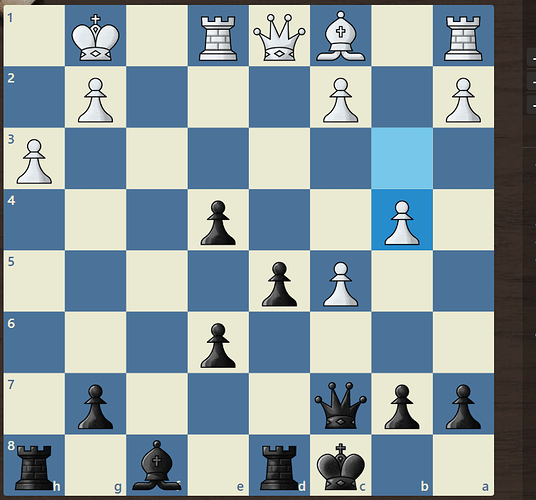black to move
Rxh3
I haven really calculated it out, but it seems like there is a win after that somewhere.
Rxh3 looks good. If gxh3, Qg3+. If Kh1, Qxh3+ and Qg3+ again. If Kh1 again, Bd6 threatening both Qh2# and Rh8+, Black cannot deal with both. If Kf1 at any point, Bxc5 and again I don’t think White can deal with both the mate threat and the Rf8+ threat. Obviously if not gxh3 then it’s just thanks for the pawn and the king is defenceless, Qh2+ is threatened, etc.
!!
Right, forced mate if he takes, on either the f or h file.
It’s not terribly hard but I linked for two reasons: One, that I was kinda proud of myself that I found it in a 1 0 game lol, but two, more importantly, I didn’t actually calculate the entire thing in the 7 seconds it took me for the move, which was a life time in 1 0 game. So, it reminded me of the talk recently in the thread about throwing pieces at the king and hoping for the best,
and how the thought process behind playing a move in 1 0 is the same as the one for finding a line worth calculating in a slower game.
Basically, you just have to see the check, Qg3+. So you work backwards a way to get that check. Then you have to see that the two open files are huge, so you work backwards on that by seeing that even though the bishop blocks the rook in getting to those files, the bishop can move with tempo, even check in some lines. In a 1 0 game that’s enough, but in a slower game it’s essentially the same thought process to find the lines: you envision an ideal scenario for your pieces and setup, like, this file open or and/or this diagonal open, defenders that need removing, and work backwards to see if any line will get you there. It’s a way of pruning your search.
Also, don’t play ridiculous opening unless you want to troll and annoy mid-level players in fast games. In you do want to do that, then go nuts. This guy was like 1900, but it’s 1 0 lol, that’s only sixty seconds:
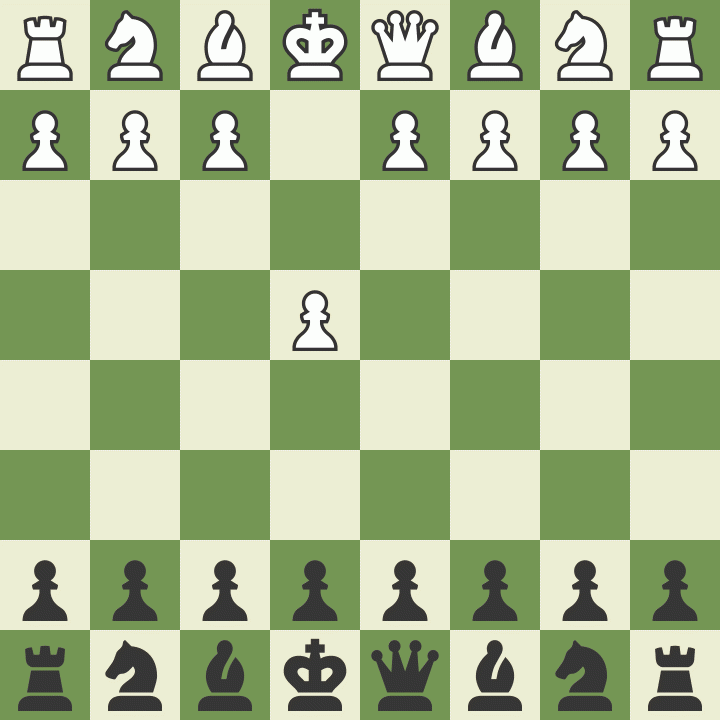
Fun 3+2 game with queen sac
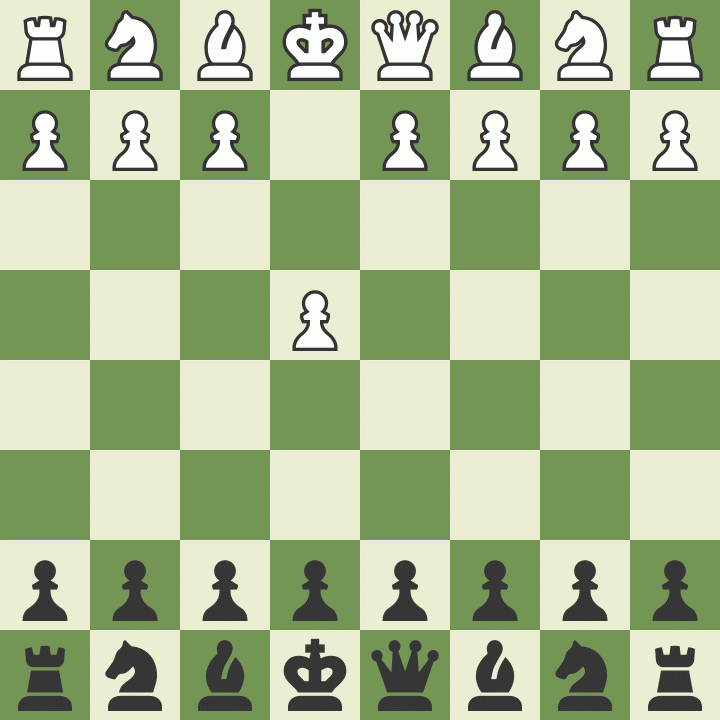
I read it. I thought the authors overly relied on gossip, innuendo and clickbaity quotes.
I had never heard of these allegations against Karjakin until now, and I have no idea what went on back then.
However, they smeared the newest 12 yr old GM from the US by accusing him of earning his GM “norms” in tournaments that allegedly consisted of disinterested and practically feeble old grandmasters. His performance ratings speak for themselves.
I knew it was a hit job when they quoted Nigel Short, who’s never missed an opportunity to be a snide douchebag.
I mean low-level grandmasters are not “professional chess”. It’s precisely because being like a 2500-rated GM doesn’t get you anything except bragging rights that people are willing to throw matches.
All the allegations in the article about match-fixing etc sound very plausible to me but where the article goes off the rails is in trying to make the case that the youngest-GM title is a one-way ticket to the top of the chess world:
In chess, only the top 30 players can expect to build a proper career from the game. Becoming the youngest grandmaster in history offered Karjakin a direct path to that world, a door to global acclaim and corporate sponsorships and invitations to the biggest tournaments — to the life that he and every prodigy, and, perhaps most of all, their parents dream about.
What does “a direct path to that world” mean? Here’s a list of the loot Karjakin got for his title:
The fruits of Karjakin’s victory, though, came quickly. The next year, he played at the tournament in Wijk aan Zee in the Netherlands, a town known as the Wimbledon of chess. In Paris, he joined the prestigious NAO chess club. Only a few months earlier, Karjakin had traveled to tournaments in Europe by bus. Now, as the world’s youngest grandmaster, he was greeted by the president of Mexico.
But lots of kids join prestigious chess clubs; you don’t need to be the youngest GM. The Wijk aan Zee invitation is going to be a one off if he can’t actually play at that level. Meeting the President of Mexico does not advance one in the chess world. The piece goes on to say:
Competing against the world’s best players, Karjakin progressed rapidly. By October 2005, when he was 15, he was already ranked among the top 50 players in the world.
October 2005 is more than three years after Karjakin attained the GM title, so that’s not really insanely fast progression. But this implication that “competing against the world’s best players” is the cause of Karjakin reaching elite level is just bullshit. To become a super-GM you need to be extremely strong, because that is actual professional chess and nobody is going to throw games to you at that level.
It’s not like Karjakin just snuck it in for the title of youngest GM either. He beat the previous record by 15 months.
So basically while it seems likely that there’s shadiness around attaining GM titles and that sucks, the article’s insinuation that this has anything do to with whether players do or don’t reach elite level is ludicrous. Nepo didn’t get his GM title until he was 17 and I haven’t noticed his chess career being ruined by this.
Well, there are only 2000 or so GMs in the whole world. Is that a small enough class to go through a bunch of shenanigans to claim bragging rights? Maybe. My guess is that there is some other stuff at play, for example with Karjakin there is a lot of Russian pride around chess (for damn good reason, to be fair) and I wouldn’t be surprised if efforts to advance his record setting GM status were backed by the Russian government for example. And it’s not like Karjakin sucks and it’s a total scam - he’s been in the top 20 in the world forever and you can’t really fake that. If anything his career is perceived as a disappointment only because he was positioned in a narrative as being the next great Russian chess player and undisputed world champion, but he’s actually not as good as Magnus Carlsen. But there’s hardly any shame in that - no one is as good as Carlsen.
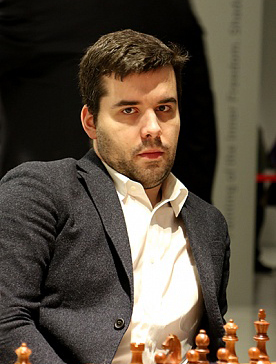
I think you’re underestimating the non-cash rewards of being a young GM. There has to be a ton of pride (for the kid and parent), self-confidence boost, big boost to elite high school and college applications, probably some other things. You’re right that the author overestimates the cash rewards, but the cash is only a small part of the picture for any accomplishment of a young kid.
Juniors don’t have to look far to see their future. No wonder chess is so popular!

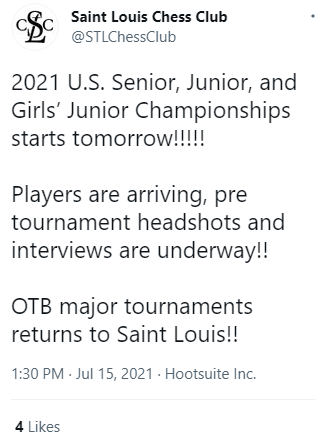
Tweet link didn’t seem to work for some reason but I didn’t want to deprive you guys of this image.
This was a really thorough video on tactics and patterns to look for. Some of it is kind of basic but I thought he did a really nice job of showing how the same tactic might pop up in a bunch of positions that don’t look very similar. Good study material IMO
I didn’t really look at Bg5 but I thought Be3 and 0-0-0 pinning that bishop fucker with Nxe5 and Bb5 coming looked interesting, though not sure about Ng4 and Nxe3 or after 0-0-0 Nxf2.
Edit. Rxd7 still looks good then. Black is getting murdered.
I don’t see how it’s obviously better than Be3 either. This might be one of those you have to play down the engine’s line to see there’s a twist on move 8 or something.
There can’t be much value in trying to figure out the difference between two +7.x moves, right? Like, as long as you can look at both of them and understand why they’re good moves and the basic continuation for each, you’re good.
I don’t know for sure that this is the right answer because I’m not an engine, but the most obvious reason to me that Bg5 is better than Be3 is that it attacks the f6 knight, and the f6 knight is a defender of d7. So not only are you threatening O-O-O pinning the bishop, you will then also be threatening to remove one of its defenders. For example if Black tries to get castled … Bg7, O-O-O O-O, Nxe5 the bishop is doomed, White’s next two moves are Bxf6 and takes on d7 and there is nothing Black can do about this.
In general though the “best move” practically speaking in a winning position is not the strongest according to the computer, it’s the simplest way to convert the position. chess.com’s accuracy evaluator takes this into account. If I have a +9 position and I play a move that makes it a +7.5 position, chess.com will not flag this as a mistake. It’s very common and totally correct from a human standpoint to go for material simplification into a simple winning position rather than try to play best moves.
Right, I wasn’t trying to say that there are not rewards, but the article’s implication that this laid down the foundations for a pro chess career is just wrong, because to become a super-GM you need to play at the level of a super-GM and that requires enormous amounts of talent and study. This idea that they inject you with super-GM mutant serum at Wijk aan Zee or at elite Paris chess clubs and you get fast-tracked to elite level is just not accurate. I could believe that the youngest-GM title could help Karjakin monetise his status as an elite player more effectively, like maybe it’s easier for him to get sponsorships in Russia or whatever. But it won’t actually do much to get you to elite level, you fundamentally still have to get there on merit. I think the article is very unclear on this, to the point of implying that it’s possible to get fast-tracked there based on early success.
This is actually a big reason “knights before bishops” is a beginner rule of thumb when developing, because it’s typically clear where the knights go - usually f3/c3/f6/c6 and if not there, they have few other options. Bishops can go lots of places, therefore it’s usually best to defer their development to see what the position requires.
Because bishops are better than knights and the bishop pair is inherently valuable, you need a reason to use your bishop to attack an enemy knight. Here that reason is the knight’s control of the d7 square, but more common in the opening are 1) a fight over one of the four central squares - i.e. the bishop exerts indirect control over the center by attacking the knight - or 2) threatening to damage the pawn structure, typically in the area the king intends to go.
I’m not sure if this site has come up here. I had some fun with it. I found it very challenging and actually pretty exhausting.
Elometer estimates rating based on responses to 76 chess problems.
IM Eric Rosen went through the whole thing in about an hour and a half in this video. The test is not timed. (He was way faster than me.) The estimate it found for him was quite accurate.
